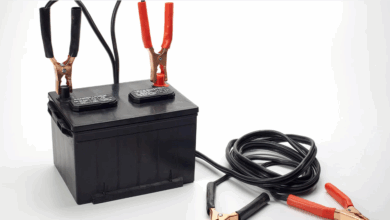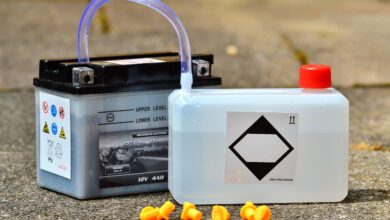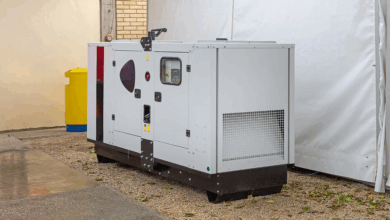Comparing the Best Home Generators on the Market

Powering Through: Comparing the Best Home Generators on the Market
Power outages are more than just an inconvenience; they can disrupt daily life, cause financial losses (from spoiled food to damaged electronics), and even pose safety risks. Whether caused by severe weather, grid issues, or local faults, losing power for extended periods is a scenario many homeowners wish to avoid. This is where a reliable home generator becomes an invaluable asset.
But stepping into the world of home generators can feel overwhelming. With various types, sizes, fuel sources, and features available, how do you determine which is the "best" for your needs? The truth is, the "best" generator isn’t a single model, but rather the one that most effectively meets your specific requirements, budget, and circumstances. This article will guide you through the essential factors to consider, compare the main types, highlight reputable brands, and help you navigate the market to find your ideal power backup solution.
Why You Need Backup Power
Before diving into the comparisons, let’s quickly reiterate why a generator might be a wise investment:
- Essential Services: Keep critical systems running – HVAC (heating/cooling), refrigerator, lights, sump pumps, security systems.
- Comfort and Convenience: Maintain basic modern comforts like television, internet, and charging personal devices.
- Safety: Ensure lighting, keep medical equipment operational, and power security features.
- Financial Protection: Prevent frozen pipes in winter, spoiled food, and potential damage from power surges when power returns.
Understanding the Two Main Types: Standby vs. Portable
The first and most significant decision is choosing between a standby and a portable generator.
-
Standby Generators:
- What they are: Permanently installed outside your home, connected directly to your home’s electrical system (usually through an automatic transfer switch).
- How they work: When the power goes out, the automatic transfer switch detects the outage and signals the generator to start. Once it’s up to speed, the switch safely disconnects your home from the utility grid and connects it to the generator. When utility power returns, the switch reverses the process, and the generator shuts down.
- Pros: Fully automatic operation (no manual effort needed), can power a significant portion or even the entire house, generally more powerful than portable units, quieter operation (compared to similarly sized portable units) as they often run at lower RPMs and have better sound dampening, powered by natural gas or propane (no need to refuel during long outages if connected to a natural gas line).
- Cons: Significantly higher upfront cost (unit + professional installation), permanent fixture, requires regular professional maintenance.
- Portable Generators:
- What they are: Mobile units that sit on a frame, typically with wheels. They have outlets on the unit itself.
- How they work: You manually start the generator, run extension cords from the generator’s outlets to the appliances you want to power, or connect it to a transfer switch (manual or sometimes automatic) installed in your home’s electrical panel.
- Pros: Lower upfront cost, portable (can be used at home, camping, job sites, etc.), flexible in what you choose to power (by connecting specific items), easier maintenance for a handy homeowner.
- Cons: Manual operation required (must start, connect, and refuel yourself), limited power output compared to large standbys, can only power select circuits or appliances (unless connected via a transfer switch), typically much noisier than standby units, require manual refueling (gasoline, propane, or diesel), pose carbon monoxide risks if not operated far away from the house.
Key Factors to Consider When Comparing Generators
Once you understand the basic types, here are the crucial elements to evaluate:
-
Power Output (Wattage): This is arguably the most critical factor. Generators are rated by wattage – specifically, running watts (what it can sustain) and starting watts (a temporary surge needed to start motor-driven appliances like refrigerators, ACs, or pumps).
- How to calculate your needs: List all the essential appliances and systems you want to power. Find their running and starting wattages. Add up the running wattages for all items you anticipate running simultaneously. Identify the single item with the highest starting wattage. Add that highest starting wattage to the total running wattage. This gives you a good estimate of the minimum starting watts your generator needs. Aim for a generator that meets or slightly exceeds this number for reliability. Don’t forget lights, computers, TVs, and chargers.
- Undersizing vs. Oversizing: Undersizing means your generator can’t handle your load. Oversizing wastes money upfront and during operation (less fuel efficiency when running below capacity).
-
Fuel Type:
- Natural Gas (Standby only): Plumbed directly from your utility line. Unlimited supply during an outage (unless the gas infrastructure is damaged). Lower running costs per hour compared to propane or gasoline.
- Propane (Standby or Portable): Stored in tanks (above or below ground). Excellent shelf life. Clean-burning. Supply is limited by tank size – needs refilling. Performance can decrease in very cold temperatures.
- Gasoline (Portable only): Widely available. Easy to refuel. However, gasoline has a limited shelf life (can gum up carburetors), is highly flammable, and emits more pollutants. Requires storing fuel safely.
- Diesel (Typically larger Portable or Standby): More fuel-efficient and powerful for their size. Diesel fuel stores well but can gel in extreme cold. Diesel generators are often more expensive upfront and require more complex maintenance.
-
Transfer Switch (Manual vs. Automatic):
- Essential for safety: A transfer switch safely isolates your home from the utility grid while the generator is running. This prevents "backfeeding," which can injure or kill utility workers trying to restore power. It also protects your generator from damage when utility power returns.
- Automatic Transfer Switch (ATS): Standard with standby generators. Detects outages and handles the transition automatically.
- Manual Transfer Switch (MTS): Requires you to manually flip a switch on a dedicated panel to disconnect from the grid and connect to the generator. Used with portable generators to power hardwired circuits.
- Connecting Directly to Outlets (Portable): Only use heavy-duty extension cords and plug appliances directly into the generator outlets. Never plug a portable generator into a wall outlet in your house (this is backfeeding and extremely dangerous).
-
Noise Level: Measured in decibels (dB). Generators are inherently noisy, especially under load.
- Portable: Typically range from 60 dB to 85 dB or even higher, depending on size and type (inverter vs. conventional). 70 dB is roughly the level of a vacuum cleaner at 10 feet.
- Inverter Generators (a type of Portable): Use advanced technology to produce clean, stable power and can often throttle engine speed based on load, making them significantly quieter (often in the 50s dB range). Ideal for sensitive electronics and places where noise is a concern (camping, residential areas).
- Standby: Generally quieter than similarly powerful portables, often running in the mid-50s to low-60s dB range at a distance.
-
Inverter Technology: Found in many modern portable generators. They convert AC power to DC and then back to clean AC power. This provides stable power output suitable for sensitive electronics (laptops, phones, complex appliances) and is generally more fuel-efficient and quieter. If you plan to power electronics, an inverter generator is highly recommended.
-
Reliability and Brand Reputation: Look for established brands with a track record of quality, readily available parts, and good customer service. Reputable brands include:
- Standby: Generac, Kohler, Cummins, Champion
- Portable: Honda, Yamaha, Champion, Westinghouse, Generac, Predator (Harbor Freight)
-
Maintenance and Service: All generators require regular maintenance (oil changes, filter replacements, battery checks, fuel stabilization for portables). Standby units often require professional service for warranty and optimal performance. Consider the ease of maintenance and availability of local service technicians.
- Cost: Factor in the initial purchase price, the cost of a transfer switch (if needed), installation costs (especially for standby), fuel costs, and ongoing maintenance.
Comparing the "Best" in Practice
Given the variables, comparing "the best" means identifying generators excelling in different categories:
- For Whole-House Automatic Backup: Standby generators from Generac, Kohler, or Cummins are top contenders. Generac is often the market leader known for wide availability and various sizes. Kohler is praised for reliable engines and clean power. Cummins offers robust industrial-grade options. The "best" depends on your specific power needs and budget, requiring a professional load calculation and quote.
- For Versatile, High-Power Portable Needs: Conventional portable generators from brands like Champion, Westinghouse, and Generac offer substantial wattage for their price, suitable for powering essential circuits via a manual transfer switch or multiple large appliances via extension cords. Champion often provides excellent value and features.
- For Quiet, Clean Power for Electronics & Camping: Inverter generators from Honda and Yamaha are considered the gold standard for their quiet operation, fuel efficiency, and pristine power output. While more expensive, their reliability and performance are top-tier. Champion, Westinghouse, and Generac also offer highly competitive inverter models at various price points, often providing a great balance of features and value.
- For Budget-Conscious Backup: Brands like Champion, Westinghouse, and sometimes store brands like Predator (Harbor Freight) offer portable generators that provide solid performance at lower costs. It’s crucial to balance cost with features, build quality, and warranty.
Installation and Safety Considerations
- Standby: Always requires professional installation by a licensed electrician and plumber (for fuel connection). Proper placement away from windows and doors is critical for safety and noise.
- Portable: Never run indoors, in a garage, or near windows and doors due to the risk of carbon monoxide poisoning. Place the generator outdoors at least 20 feet away from your home, with the exhaust directed away. Use heavy-duty, outdoor-rated extension cords. Store fuel safely in approved containers. Always follow manufacturer instructions.
FAQs (Frequently Asked Questions)
-
Q: How much power (watts) do I really need?
A: It depends entirely on what you want to power. Start by listing essential items (fridge, lights, furnace fan, sump pump) and their wattages. Add the highest starting wattage item to the total running wattage to get a minimum requirement. For whole-house backup, a professional load calculation is essential. -
Q: Is a standby generator worth the higher cost?
A: For automatic, seamless, whole-house backup without manual effort during an outage, yes. It offers peace of mind and convenience, especially if outages are frequent or you need continuous power for medical reasons. -
Q: Can I connect a portable generator directly into my home’s wall outlet?
A: ABSOLUTELY NOT. This is called backfeeding and is extremely dangerous, risking electrocution for utility workers and damaging your home’s electrical system. Use a transfer switch or connect appliances via extension cords. -
Q: Are inverter generators better than conventional ones?
A: They are generally quieter, more fuel-efficient (especially at lower loads), and produce cleaner power suitable for sensitive electronics. For powering basic appliances and tools where noise isn’t a major concern, a conventional portable might be sufficient and cheaper. -
Q: How loud are generators?
A: It varies greatly. Standby generators and inverter portables are the quietest (often 50s-60s dB at a distance). Conventional portables are much louder (65-85 dB+). Check the decibel rating before buying and consider placement away from your home and neighbors. - Q: How often do generators need maintenance?
A: Consult the owner’s manual, but generally, portable generators need oil changes based on run time (e.g., every 50-100 hours) and fuel checks/stabilization. Standby units require annual professional servicing, including oil, filters, and system checks.
Conclusion
Choosing the best home generator is a significant investment in your home’s resilience and your family’s comfort and safety. It requires careful consideration of your power needs, budget, preferred fuel type, and desired level of convenience (automatic vs. manual). Standby generators offer unparalleled ease of use and whole-house power, while portable generators provide flexibility and a lower entry cost.
By understanding the key factors like wattage, fuel type, the necessity of a transfer switch, and noise levels, you can narrow down your options. Researching reputable brands known for reliability in the specific type of generator you need is also crucial. Don’t hesitate to get multiple quotes for standby installation and consult with a qualified electrician to determine the best way to safely connect a portable unit to your home’s essential circuits via a transfer switch.
Ultimately, the "best" generator is the one that is properly sized, safely installed, and reliably powers what you need when the lights go out. With thorough research and careful planning, you can find the perfect backup power solution to keep your home running smoothly through any outage.




![How to Bypass CO Sensor on Generator – [4-Step Safety Guide]](https://www.generator411.com/wp-content/uploads/2025/08/co-sensor-on-generator-390x220.png)